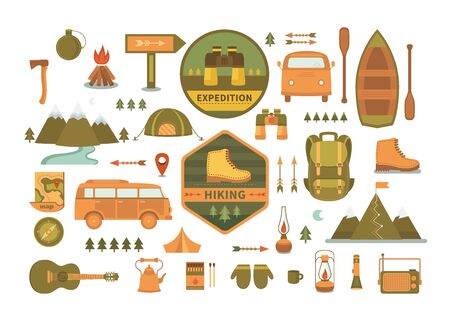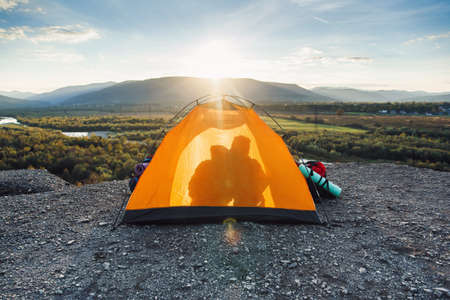1. Understanding the Importance of the Right Socks
When youre heading out for a camping or hiking adventure, your gear checklist probably includes things like a sturdy tent, sleeping bag, and hiking boots. But one item that often gets overlooked is socks — and choosing the right pair can make or break your trip. The socks you wear play a huge role in keeping your feet warm, dry, and blister-free.
Why Socks Matter More Than You Think
Your feet are constantly working when youre on the trail or at camp. They bear your weight, absorb shock from uneven terrain, and deal with moisture from sweat or weather. Wearing the wrong type of socks can lead to painful blisters, cold toes, or even more serious issues like frostbite in extreme conditions.
The Big Three: Comfort, Warmth, and Protection
Here’s a quick breakdown of why choosing the right socks is so important:
| Factor | Why It Matters |
|---|---|
| Comfort | Padded and well-fitting socks help reduce foot fatigue during long hikes. |
| Warmth | Socks made with insulating materials (like wool) help keep your feet warm in cooler temperatures. |
| Protection | The right socks wick away moisture and reduce friction, helping prevent blisters and hot spots. |
Cotton vs. Performance Materials
A common mistake beginners make is wearing cotton socks on the trail. Cotton holds moisture, which means once your feet sweat or get wet, they stay wet — leading to chills and blisters. Instead, look for materials like merino wool or synthetic blends that wick moisture away and dry quickly.
Cotton vs. Merino Wool vs. Synthetic Socks
| Sock Material | Moisture Wicking | Warmth | Drying Speed |
|---|---|---|---|
| Cotton | Poor | Poor when wet | Slow |
| Merino Wool | Excellent | Excellent | Moderate |
| Synthetics (e.g., polyester blends) | Good | Good | Fast |
A Small Investment That Pays Off Big Time
You don’t need a drawer full of fancy hiking socks — just a couple of good pairs suited to the season and environment will do. Whether youre doing a weekend camping trip in the Rockies or a day hike in Yosemite, the right socks help you stay comfortable and focus on enjoying the outdoors instead of dealing with sore or frozen feet.
The bottom line? Good socks are just as essential as good boots when it comes to outdoor adventures.
2. Materials Matter: Wool, Synthetics, and Blends
When it comes to camping and hiking, the material of your socks can make or break your experience. The right fabric helps prevent blisters, keeps your feet warm or cool depending on the weather, and ensures comfort during long treks. Let’s take a closer look at the most common sock materials—merino wool, synthetics like polyester and nylon, and blended options—and how they perform outdoors.
Merino Wool
Merino wool is a favorite among outdoor enthusiasts for good reason. Its soft, breathable, and naturally moisture-wicking. Unlike traditional wool, merino doesn’t itch and it regulates temperature really well—keeping your feet warm in cold conditions and cool when it’s hot. It also has natural odor resistance, which is a big plus when you’re out on the trail for days.
Synthetics: Polyester and Nylon
Synthetic fibers like polyester and nylon are engineered for performance. They dry quickly, wick away sweat efficiently, and offer excellent durability. These materials are often used in high-intensity hiking socks because they reduce friction (which means fewer blisters) and hold up well under heavy use. However, they might not provide the same warmth as wool in colder temperatures.
Blends
Many quality hiking socks combine materials to balance performance and comfort. A common blend is merino wool mixed with nylon or spandex for added stretch and durability. These hybrid socks aim to give you the best of both worlds—warmth from the wool and strength from the synthetics.
Material Comparison Table
| Material | Pros | Cons | Best For |
|---|---|---|---|
| Merino Wool | Warm, breathable, odor-resistant, moisture-wicking | Can be pricier, slower to dry than synthetics | Cold weather hikes, multi-day trips |
| Polyester | Quick-drying, durable, lightweight | Less insulation in cold weather, may retain odor | Warm weather hikes, high-intensity activities |
| Nylon | Strong, abrasion-resistant, adds durability to blends | Not very breathable on its own | Sock reinforcements (heel/toe), blended designs |
| Blends (Wool + Synthetics) | Balanced performance: warm, stretchy, durable | Quality varies by brand and mix ratio | All-around camping and hiking use |
Quick Tip:
Avoid cotton socks while camping or hiking. Cotton holds onto moisture and takes forever to dry—leading to cold toes and painful blisters.
No matter what type of terrain or weather youre facing on your outdoor adventure, choosing socks made from the right material will help keep your feet happy mile after mile.

3. Cushioning and Fit: What to Look For
When youre out on the trail or at a campsite, your feet are doing most of the heavy lifting. Thats why having socks with the right cushioning and a snug fit is more than just a comfort issue — its essential for preventing blisters, reducing fatigue, and keeping you going all day long.
Why Cushioning Matters
Cushioning in hiking and camping socks helps absorb impact as you walk, especially over rocky or uneven terrain. It also creates a soft barrier between your foot and your boot, which reduces friction — one of the main causes of blisters.
Types of Cushioning
| Type of Cushioning | Best For | Benefits |
|---|---|---|
| Light Cushion | Warm weather, short hikes | Breathable and less bulky |
| Medium Cushion | Day hikes, moderate trails | Good balance of comfort and ventilation |
| Heavy Cushion | Cold weather, long treks | Maximum warmth and shock absorption |
The Importance of a Snug Fit
A sock that fits well will stay in place throughout the day, preventing bunching or slipping inside your boot. Loose socks can rub against your skin and lead to painful hotspots or full-blown blisters. On the other hand, socks that are too tight might cut off circulation and make your toes feel cold or numb.
Tips for Getting the Right Fit:
- Check sizing charts: Different brands may vary slightly.
- No wrinkles: Make sure the sock lays flat against your foot inside your boot.
- Avoid compression unless needed: Compression socks can be great for recovery but may not be ideal for everyone on long hikes.
- Try them on with your boots: Always test the fit with the shoes youll wear while camping or hiking.
Quick Tip:
If you’re between sizes, go with the smaller size for a snugger fit — most good-quality hiking socks have enough stretch to accommodate without being too tight.
The right combination of cushioning and fit can make or break your outdoor experience. Whether youre heading out for a weekend in the woods or a multi-day backpacking trip, choosing socks that support your feet properly will help you hike farther, feel better, and stay blister-free.
4. Choosing the Right Sock for the Right Season
When it comes to camping and hiking, your sock choice should match the season just like your jacket or sleeping bag. Wearing the wrong type of socks can lead to blisters, cold toes, or sweaty feet—none of which make for a fun outdoor experience. Heres how to choose the right socks whether youre hitting the trails in summer heat or winter chill.
Warm-Weather Camping
During spring and summer trips, your feet need to stay cool and dry. Look for lightweight, moisture-wicking socks made from synthetic fibers like polyester or nylon blends. Merino wool is also a great option—even in warm weather—because it regulates temperature and resists odor.
Tips for Warm Weather:
- Go light: Choose low to mid-cushion socks to reduce sweating and overheating.
- Breathe easy: Look for mesh ventilation zones built into the sock.
- Avoid cotton: Cotton holds moisture, increasing your risk of blisters.
Cold-Weather Camping
In fall and winter, keeping your feet warm and dry is crucial. Cold toes can ruin a trip fast. Choose thicker socks with high insulation properties, such as heavyweight merino wool or wool-blend socks. Layering your socks can also help trap warmth without sacrificing comfort.
Sock Layering Technique:
Using a two-layer sock system helps manage moisture and retain heat. Heres how:
| Layer | Material | Purpose |
|---|---|---|
| Liner Sock (Inner) | Thin synthetic or silk | Wicks moisture away from skin to prevent blisters |
| Insulating Sock (Outer) | Heavy merino wool or wool blend | Adds warmth and cushions foot inside boot |
Tips for Cold Weather:
- No tight layers: Make sure layered socks don’t restrict blood flow—it’ll make your feet colder.
- Bring backups: Always pack extra pairs; wet socks are worse than no socks in winter.
- Dry at night: Let your feet breathe and dry out before putting on fresh socks for sleeping.
Selecting the right sock for the season helps keep your feet happy, whether you’re trekking through a sunny canyon or cozying up in a snow-covered tent.
5. Extra Features: Seamless Construction, Moisture-Wicking, and Odor Control
When youre out on a multi-day camping or hiking trip, comfort and hygiene become top priorities—especially for your feet. Choosing socks with advanced features can make a huge difference in preventing discomfort like blisters, wet feet, or bad odors. Here are some key sock technologies to look for that can really upgrade your outdoor experience.
Seamless Construction: Say Goodbye to Blisters
Traditional socks often have seams at the toes that can rub against your skin during long hikes, leading to painful blisters. Seamless socks eliminate this problem by using smooth knitting techniques that reduce friction points. They’re especially helpful when youre covering lots of miles or wearing snug-fitting boots.
Benefits of Seamless Socks:
- Reduces hot spots and friction areas
- Improves overall comfort
- Great for people with sensitive skin or prone to blisters
Moisture-Wicking: Keep Your Feet Dry
Sweaty feet are not just uncomfortable—theyre also a breeding ground for bacteria and blisters. That’s why moisture-wicking materials are essential. These fabrics pull sweat away from your skin and help it evaporate quickly, keeping your feet dry even on long treks.
Common Moisture-Wicking Materials:
| Material | Properties |
|---|---|
| Merino Wool | Natural wicking, temperature regulating, soft feel |
| CoolMax® | Synthetic fiber designed for high-performance moisture control |
| Polyester Blends | Quick-drying and durable, often mixed with spandex for stretch |
Odor Control: Stay Fresh on the Trail
If you’ve ever taken off your boots after a full day of hiking, you know odor can be an issue. Look for socks that feature anti-odor technologies such as silver ions or naturally odor-resistant fibers like merino wool. These materials help neutralize bacteria that cause bad smells, so you—and your tent-mates—can breathe easier.
Top Sock Features for Odor Control:
- Merino Wool: Naturally resists odor buildup over multiple days
- Silver-Infused Fibers: Destroys odor-causing bacteria on contact
- Bamboo Blends: Soft, breathable, and naturally antibacterial
Quick Tip:
If you’re planning a long backcountry trip, pack at least two pairs of performance socks so you can rotate them—one to wear while the other dries out.
Socks may seem like a small detail in your gear list, but advanced features like seamless construction, moisture-wicking materials, and odor control can have a big impact on how comfortable and healthy your feet stay during your adventure.
6. Care Tips to Extend the Life of Your Camping Socks
Taking good care of your hiking and camping socks not only keeps them feeling fresh, but also helps maintain their performance and durability—especially when youre counting on them to prevent blisters and keep your toes warm in the great outdoors. Here’s how to wash and store your socks properly so they last for many adventures.
Washing Tips
Proper washing is key to keeping your socks in top shape. High-quality hiking socks are usually made from materials like merino wool, synthetic blends, or a combination of both. These materials require special attention during cleaning. Follow these simple steps:
| Step | What to Do | Why It Matters |
|---|---|---|
| 1. Turn Inside Out | Flip socks inside out before washing. | This helps remove sweat, dirt, and skin oils from the inner fibers. |
| 2. Use Cold or Warm Water | Wash on a gentle cycle using cold or lukewarm water. | Hot water can damage elastic fibers and shrink wool. |
| 3. Mild Detergent Only | Avoid bleach or fabric softeners; use a mild detergent instead. | Harsh chemicals can break down performance fabrics. |
| 4. Air Dry | Lay flat to dry or hang them up—never use high heat in the dryer. | High heat can shrink or warp materials, reducing fit and comfort. |
Storage Tips
How you store your socks between trips also plays a big role in how long they last. Avoid tossing them in a damp gear bin or stuffing them into boots where they can lose their shape or collect mildew.
Best Practices for Sock Storage
- Keep them dry: Always make sure your socks are completely dry before storing them.
- Avoid compression: Don’t tightly roll or wad them up; this wears out the elastic over time.
- Use a breathable container: Store socks in a mesh bag or drawer organizer that allows airflow.
- Separate by season: Keep heavier wool socks stored separately from lightweight summer ones for easy access based on your trip’s needs.
A Quick Pro Tip:
If you’re camping in colder months, bring an extra dry pair of socks just for sleeping. This not only keeps your feet warm at night but also reduces wear on your daytime hiking pair since they get a break overnight.
Treating your camping socks with care means they’ll be ready to support every mile of trail ahead—blister-free and cozy from sunup to sundown.


